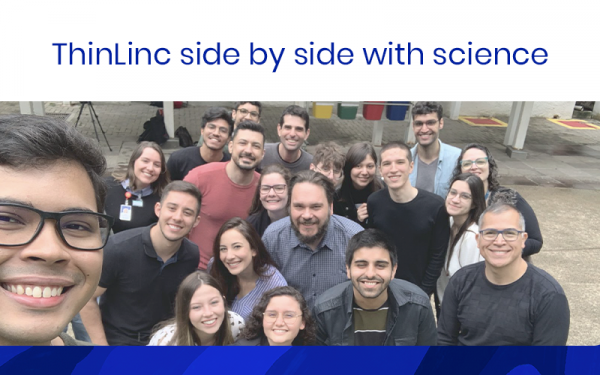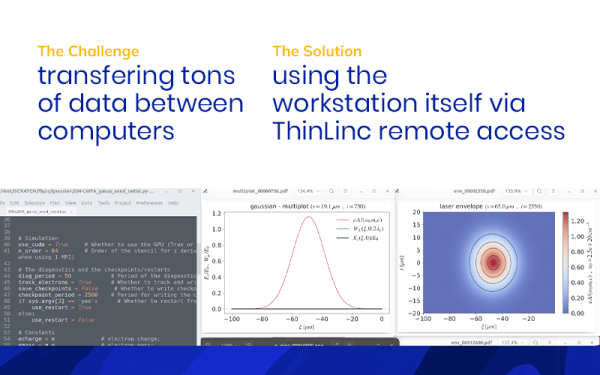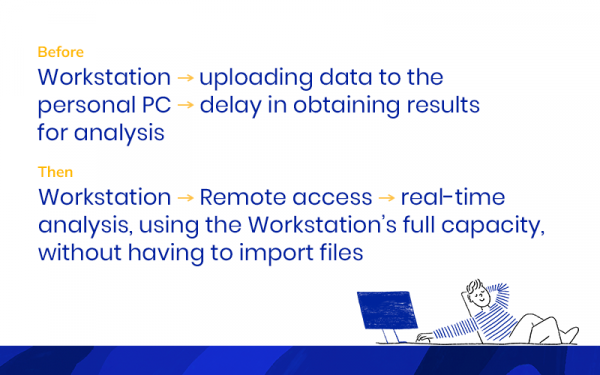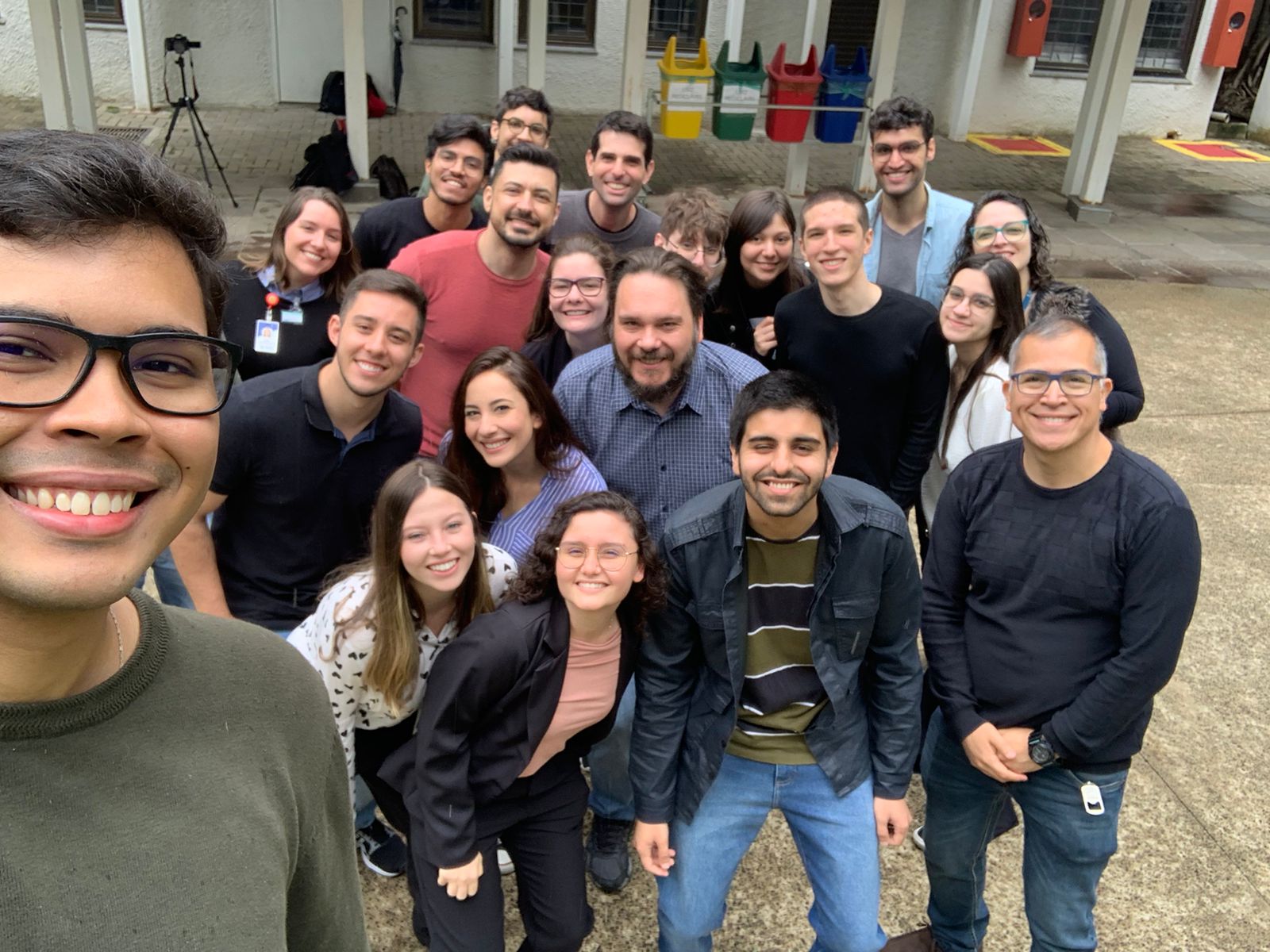Imagine the following: you are in a doctor’s office, sitting in front of him. The doctor’s facial expressions are not the best. Then you get the news: you have a tumor in your body. Quite common yet extremely impactful in people’s lives. After all, this is one of the most feared diseases. Usually, its treatment requires more aggressive procedures.
Our technology has also been used by scientists at the Beam Physics Group (GFF) at the Federal University of Health Sciences of Porto Alegre (UFCSPA), Brazil, to accelerate and optimize this crucial work in developing treatments for tumors.

This team of Brazilian scientists includes the physicist and professor Alexandre Bonatto, one of the coordinators and founders of the GFF. Considering this study’s relevance, we invited Bonatto to tell us about the research and how ThinLinc contributes to this work. According to him, the group studies the generation and transportation of charged beams and their interaction with the matter. Among others, the research lines of the group involve:
- Search for tumors’ treatment using a laser;
Study of optical photon transport in Monte Carlo simulations, aiming at applications in photodynamic therapy. It is a form of treatment for tumors by applying a laser to a tumor tissue in which a photosensitizing chemical agent has been deposited;
- FLASH radiotherapy with focused beams of very-high-energy electrons (or VHEE);
It’s a promising technique for cancer treatment. It may offer a lower-cost alternative to proton therapy, with potentially similar outcomes. Moreover, laser-plasma accelerators operating at high repetition rates could provide the high dose rates (> 40 Gy/s) needed to achieve the so-called FLASH effect, which can mitigate the treatment side effects on healthy tissue.
- Radiopharmaceuticals by photoactivation;
Optimization of laser-plasma accelerators using machine learning to investigate the production of radiopharmaceuticals via photoactivation.
The challenge: the slowness in transferring a large amount of data
According to Bonatto, these works are centered on computational simulations. Therefore, the analysis, generation, and computation of data from these studies generate an immense number of files that are worked on a high-capacity workstation and used to run several simulations.
“As for the simulations, we also generate a lot of output data (tens of gigabytes and even terabytes). In addition, we perform the post-processing of this data on the workstation and then copied the post-processed results by the text terminal, which generates a few hundred megabytes. Despite being a small amount, copying these results from the workstation to analyze them locally, on my computer, ended up making the research very time-consuming”, explains the researcher.
In this scenario, ThinLinc came in as a drive space and time-saving solution. Understand how in the next topic.

The solution: use the workstation via ThinLinc remote access
With ThinLinc’s ability to provide remote access to the scientists’ workstations, the software became an essential tool for researchers, streamlining and facilitating the team’s work.
“In this context, ThinLinc has simplified my workflow a lot. Instead of copying these post-processed files, I log in to the workstation using the ThinLinc Client and have access to its graphical interface. Thus, I use it as if I were accessing the workstation locally. It allowed me to analyze the post-processed results directly in the ThinLinc Client, eliminating the need to copy large files to my local computer, which I did so often”, Bonatto says.
“I am satisfied with ThinLinc’s performance: I practically feel as if I was using the workstation locally. Since ThinLinc’s graphical interface is more user-friendly than text terminal access, students with no experience in remote terminal access are also benefiting from the tool”.

Now with ThinLinc, an expensive and unique system can be used by more researchers without increasing equipment costs
As you have seen throughout this article, the development of medicine also depends on advancing and making the best possible use of the available technology. In cases like the GFF, ThinLinc can bring many benefits, balancing costs and giving scientists more agility.
To get an idea, the workstation used by the GFF has two Xeon 4114 processors (20 physical cores / 40 threads), with 192Gb of ECC RAM (RDIMM), three GPUS (two NVIDIA RTX A6000, with 48Gb of VRAM memory each, and one NVIDIA RTX A4500, with 20 GB of VRAM memory.
Currently, the machine allows access to 6 users. Three are already using ThinLinc: one from Windows 11, one from macOS; soon, and one from Linux (Ubuntu).
Applications are mainly non-commercial; codes to perform particle-in-cell (PIC) and Monte Carlo computer simulations. Check out some:
– Particle-in-cell: FBPIC (https://fbpic.github.io/), WarpX (https://warpx.readthedocs.io/en/latest/);
– Monte Carlo: TOPAS (http://www.topasmc.org), Geant4 (https://geant4.web.cern.ch), MCX (http://mcx.space)
Whatever your demand is, ThinLinc is there for you.
The research and development of new technologies depend on many factors. One of them is to ensure easy access to work tools. That’s why ThinLinc exists: to connect people to their purpose, saving time, energy, and money. We are very proud to be a tool for scientists like those at the GFF.
A new group with accelerated results.
The Beam Physics Group (GFF) was formalized in 2017 at the National Council for Scientific and Technological Development (CNPq), an entity linked to the Ministry of Science, Technology, and Innovation to encourage research in Brazil. Researchers from UFCSPA and UFRGS are part of the GFF, whose activities are mainly theoretical and computational and require the availability of high-performance computational resources.
Recently, CNPq approved a project by the group in partnership with IPEN’s Center for Lasers and Applications, aiming to develop Brazil’s first laser electron accelerator, to be used for exploring novel techniques in radiopharmaceutical production. In this project, while IPEN coordinates the experimental activities, the GFF is responsible for managing and executing the required computational simulations, as well as for optimizing the obtained results by employing machine learning techniques.
GFF has also established a collaboration with the universities of Valencia and Manchester to study the use of 2D carbon-based materials (carbon nanotubes and graphene) as electron accelerator structures. Part of the simulations in this work are performed by the GFF.

